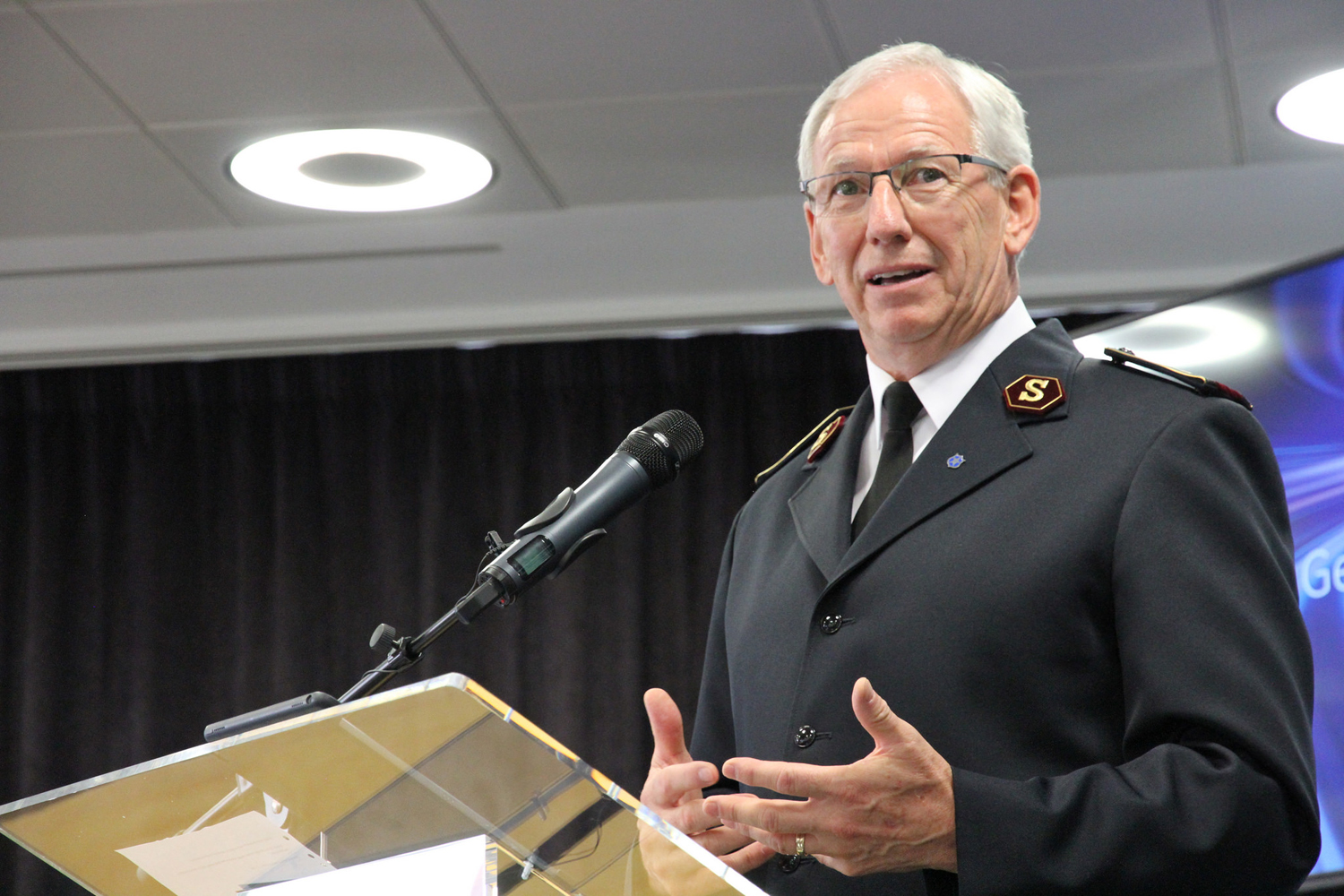COLONEL SAMUEL MKAMI
Bwana Yesu asifiwe wana wa Mungu, Maafisa, Makadeti, na wafanyakazi, na ndugu zetu wote katika Kristo,
Kwa furaha na shukrani kuu, tunasimama mbele ya Mungu leo hii kuadhimisha miaka 25 ya chuo chetu cha maafisa tangu chuo hiki kianzishwe mwaka 2000. Ni neema kubwa na si kwa uwezo wetu, bali ni kwa mkono wa Mungu aliyetuongoza hatua kwa hatua mpaka tumefika hapa.
Kwanza, tunamshukuru Mungu Baba yetu kwa kuwa ndiye aliyepanda mbegu ya wito wa kuanzisha chuo hiki. Kupitia maono ya waanzilishi na uongozi wa Kanisa, ulikuwa kuwa ni lazima kanisa liwe na viongozi waliofundishwa vizuri ili kubeba maono ya mwokozi wetu na kufanya ukristo uwe na thamani kubwa mioyoni mwa watu wa Mungu. Na waanzilishi wetu walianzisha huduma hii
chuo hiki kimekuwa chombo cha baraka na huduma kwa teritori ya Tanzania.
Pili, napenda kutoa shukrani za dhati kwa viongozi wa Kanisa hasa Lieut-Colonel David na Jean Burrows, Major Linda Manhardt pia Commisioner Patricia Bird kwa mpango mzuri wa kuanzisha chuo hiki. Na hasa General John Gowans aliyeidhinisha uanzishwaji wa chuo hiki. Tunawashukuru maafisa walimu, wahitimu, na wadau wote walioweka nguvu, muda, na maombi kuhakikisha chuo hiki kinasimama imara kwa robo karne. Bila mshikamano huu wa kiimani, safari hii isingefanikishwa.
Katika kipindi cha miaka 25, tumeona:
Watakaji wliitika mwito kusoma Neno la Mungu na kujifunza huduma na uongozi wa kiroho.
Wahitimu wengi wakitumwa kwenye vikao na matuo mbalimbali, wakiwa mashuhuda wa Kristo. Na kwa kupitia kwao kanisa limeendelea kukua na kuimarika.
Lakini tunakumbuka pia kwamba mafanikio haya si kwa ajili ya kujivunia tu, bali ni wito wa kuendelea kuwa mwangaza wa mataifa na chumvi ya dunia. Tunaposherehekea miaka 25, tujiulize: je, tunazidi kusimama kwenye msingi wa Neno la Mungu? Je, tunazalisha wachungaji na viongozi wenye moyo wa Kristo aliye mchungaji mwema?
Tunapoitazama safari ijayo, tunahimizwa na maneno ya Mtume Paulo kwa Wafilipi 3:13-14: “Sijasahau mambo yaliyo nyuma, lakini nakaza mwendo, nikikazia shabaha ya thawabu ya mwito mkuu wa Mungu katika Kristo Yesu.”
Hivyo, safari ya miaka 25 inayofuata iwe safari ya uaminifu zaidi, unyenyekevu, matumaini, maendeleo na kujitolea kwa huduma.
Kwa Makadeti, na , kumbukeni ninyi ndio matunda ya chuo hiki. Msije kusahau kwamba elimu ya kichungaji si kwa ajili ya heshima, bali ni kwa ajili ya huduma. Mmeitwa si tu kujifunza, bali pia kuwa mifano ya maisha ya Kristo katika jamii zenu kuanzia sasa na siku zijazo.
Mwisho, napenda kusema: Jubilei hii ya miaka 25 iwe kumbukumbu kwamba “Aliyeanza kazi njema ndani yetu ataikamilisha hata siku ya Kristo Yesu” (Wafilipi 1:6). Tumsifu Mungu kwa uaminifu wake wa jana, leo, na kesho.
Tunapoanza sherehe hizi tujikumbushe maneno ya ushindi wa waisraeli na tendo kubwa lililofanyika huko Mispa wakati wa nabii Samweli.
1 Samweli 7:12
Andiko linasema:
“Ndipo Samweli akatwaa jiwe, akalisimika kati ya Mispa na Sheni, akaliita jina lake Eben-ezeri, akisema, Hata sasa Bwana ametusaidia











